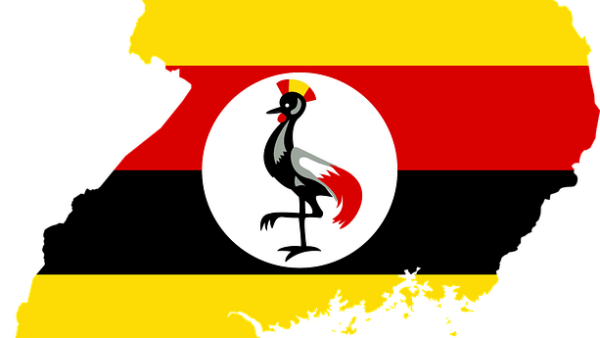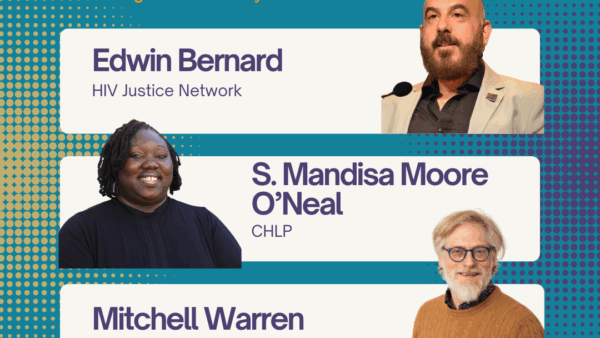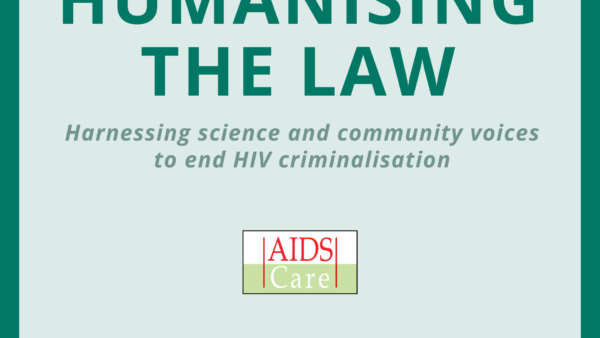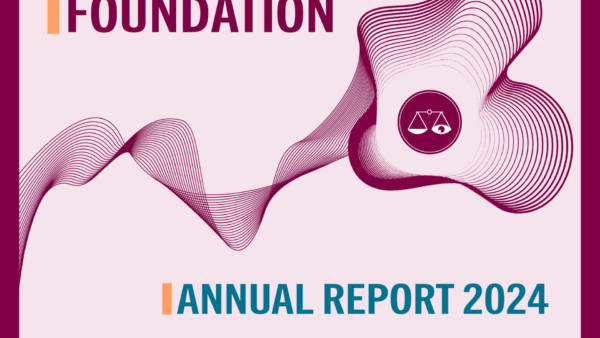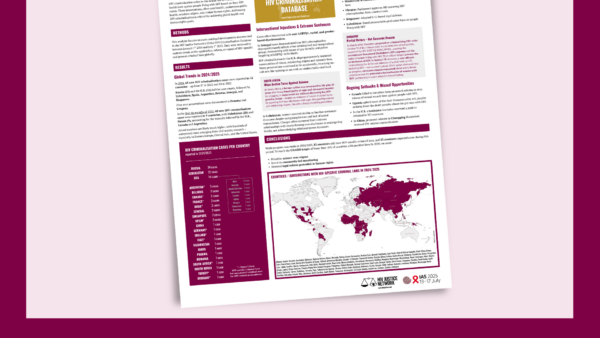
Why is the federal government still refusing to decriminalize HIV?
Advocates have demanded change for decades. Canada’s government says there’s no path forward for legal reform.
Since 1989 in Canada, more than 200 people have faced charges related to HIV non-disclosure. Here, a person can be charged for not disclosing their positive HIV status to someone they’ve had sex with, even if they have no intention of harming the other person, and even if they don’t transmit the infection. While activists have been fighting for nearly a decade to have these laws repealed, the federal government announced last year they would not be moving forward with efforts to decriminalize HIV non-disclosure. Xtra has spoken with the people at the front of the fight for decriminalization—and the people that these antiquated laws affect.
These are their stories.
The phone call
On November 5, 2024, a phone call that didn’t even last five minutes ended almost a decade of work to decriminalize HIV non-disclosure in Canada. Despite previously indicating that the law might be changed, a representative from the Justice Department told advocates that there would be no path forward to reform a set of policies that criminalize HIV non-disclosure in the country.
Never mind that for the past eight years, various promises had been made. Since 2016, Ottawa has acknowledged the overcriminalization of HIV non-disclosure in Canada. This recognition prompted hearings, consultations and studies that advocates had hoped would lead to reforming the country’s criminal code.
Despite not having HIV-specific legislation, Canada has some of the highest numbers of reported cases of HIV criminalization in the world—a burden, advocates say, that is felt disproportionately by LGBTQ2S+, Black and Indigenous peoples.
According to a 2022 report by the HIV Legal Network, from the first prosecution in 1989 until the end of 2020 in Canada, 206 people faced charges related to HIV non-disclosure in 224 separate cases. Of those cases, only the outcomes of 187 cases were known: 70 percent ended in convictions, and 83 of those convictions resulted from a guilty plea, rather than a guilty verdict following trial.
Although HIV non-disclosure prosecutions affect people of all genders in Canada, 89 percent of people charged are men, and nine percent are women. Of all prosecutions, an estimated 22 percent were Black men and 33 percent were Indigenous women.
On the day of the government’s phone call in November, André Capretti picked up the call on behalf of the Canadian Coalition to Reform HIV Criminalization (CCRHC), an organization founded in 2016 that calls on the federal government to engage in legal reform and limit HIV criminalization.
“It was, of course, very frustrating to hear. It felt like we had been taken for a ride and our time was wasted,” he says.
Capretti, who’s also a policy analyst and a lawyer at the HIV Legal Network, says that, at the time, he hadn’t been feeling optimistic, given the delays he and his fellow advocates had experienced while awaiting the federal government’s answer. In a way, he says, the phone call was a form of closure. However, he also felt frustrated—as an advocate but also on behalf of the people who are in the crosshairs of the criminalization of HIV non-disclosure in Canada.
“This is their everyday lived realities, and these are the risks that they face when they are in intimate relationships or choose to engage in sexual encounters with people,” he says.
“If they’re frustrated, disappointed or feel let down, that’s all completely valid.”
The human cost of a cruel policy
Tammy Jones still remembers the afternoon in July 2007 when she was arrested. (Xtra has given her a pseudonym to protect her privacy.) She was doing her chores and affirmations at a recovery home in Abbotsford, B.C., when she heard a knock at the door.
“Tammy Jones?” a police officer asked.
“Yeah,” Jones answered.
“We have a warrant for your arrest.”
The police didn’t explain what crime she’d committed. Jones thought to herself: Was it drug-related? Prostitution? Before going to the recovery house, Jones had worked as a sex worker in Vancouver and had been battling drug addiction.
Months before her arrest, a man with whom she’d had a relationship was diagnosed as HIV-positive. He confronted her and blamed her for transmitting the virus to him. At the time this ex-partner was diagnosed, Jones had been living with HIV for six years. She was on medication to treat her HIV, and sexual contact with him had always involved the use of condoms—her partner, she said, was aware of her positive status. But then, one night, Jones alleges, her ex-partner assaulted her while she was sleeping. He didn’t use a condom.
On the day of her arrest, Jones was driven about an hour away to Vancouver. When she arrived at the police station, she heard the cops saying: “She’s a sex offender.” She was confused by this remark initially, but she soon learned she was being charged with aggravated sexual assault for HIV non-disclosure.
Jones eventually met with a lawyer, who encouraged her to take a plea deal to shorten her sentence from eight years to three. She accepted the deal and was given a statutory release after serving two and a half years. But her guilty plea also meant that her name would be added to the national sex offender registry.
Jones and I first met in Vancouver last spring. While the sun was out, a slight breeze made us shiver. Jones cried as she remembered what had happened during her arrest and eventual release. She told me the lawyer who represented her didn’t put up a fight. She said she didn’t understand the implications of accepting the guilty plea—and didn’t grasp that she’d be registered as a sex offender—until after she got out of prison.
As we sat on a bench in the Olympic Village neighbourhood, Jones spoke so softly that the wind sometimes overpowered her voice. Recalling that day in 2007 and its implications to her life almost two decades later, she said: “They make me out to be this scary person, and I’m not that person. I’m not who they think I am.”
Jones said she feels there’s an irony—and an injustice—to being labelled as a sex offender when, she said, she was sexually assaulted by a family member as a kid, as well as by the man who laid the charges that led to her arrest. She turned to alcohol and drugs to cope with the trauma of both these abuses.
For people like Jones, who’s been on the sex offenders list for almost 20 years now, the brunt of the label reverberates in various aspects of her life, limiting her employment opportunities and holding her from achieving the future she dreams for herself.
Tricky legal ground
Despite the severity of punishment HIV-positive Canadians can face for non-disclosure, there is no specific law that explicitly prohibits the non-disclosure of HIV status in Canada. Instead, legal precedents have developed through court decisions. Courts have relied on existing criminal offences, such as criminal negligence causing bodily harm and aggravated sexual assault, to convict people who are HIV-positive and who have failed to inform their sexual partner of their status.
While arrests related to non-disclosure date back to 1989, it wasn’t until 1998 when the Supreme Court of Canada ruled that people must disclose their HIV status before engaging in any type of sex with a new partner. Failing to do so, the court ruled, could be interpreted as a form of fraud that invalidates consent. In the court’s eyes, if a person has sex without disclosing their status, that sex is seen as non-consensual, similar to coercion in sexual assault cases.
Capretti, the lawyer at the HIV Legal Network, says that before a case is seen as an act of fraud, it needs to have two elements: proof that a person lies or hides their status, and an element of harm. “There’s physical harm from contracting HIV,” Capretti says. “But the law also considers the risk of exposing someone to HIV, even if they don’t get it, as harm.”
According to him, the legal framework in Canada still relies on outdated understandings of how HIV is transmitted, which can lead to unjust criminalization. He says people with a suppressed viral load pose virtually no risk of transmitting the virus, yet the law still requires disclosure in situations where the actual risk is minimal. This disconnect, he says, leads to unjust charges and perpetuates stigma against those living with HIV.
In more recent history, the 2012 Supreme Court ruling, R. v. Mabior,has shaped how cases of alleged HIV non-disclosure are treated in the country. In this case, a man was charged with nine counts of aggravated sexual assault based on his failure to disclose his HIV‑positive status to nine complainants, although none of them contracted HIV. The Supreme Court ruled in that case that people living with HIV have a legal responsibility to disclose their status if they have a “realistic possibility” of transmitting the virus. (According to the ruling, an HIV-positive person is not required to disclose their status if they use a condom and have a viral load below 1,500 copies/ml.)
This precedent has since been interpreted differently in various parts of the country, Capretti says. For example, in 2018, a directive was issued to limit charges for HIV non-disclosure in the Northwest Territories, Nunavut and Yukon, ending the use of sexual assault laws in these cases; instead, they could be prosecuted on simple assault or other charges like criminal negligence. It also specified that individuals with a suppressed viral load (under 200 copies/ml) should not be prosecuted for HIV exposure, as they are unlikely to transmit the virus. Cappreti says using simple assault and other charges, as opposed to a sexual assault charge, is important to continue to fight stigma related to HIV.
“The whole country’s legal landscape has failed to evolve alongside the scientific advances in HIV research.”
In Ontario, B.C., Alberta and Quebec, prosecutors have been instructed not to charge individuals with a suppressed viral load, whether or not they used a condom. Policies differ on how long a person’s viral load must be suppressed—Ontario requires at least six months, while B.C., Quebec, and Alberta allow four to six months. There is no minimum time limit in the three territories, and information from other provinces is limited.
“The state of the law in Canada is inconsistent,” Capretti says. “It means that someone in Ontario would have different legal obligations than someone in Manitoba, someone in New Brunswick, or someone in British Columbia.” If a person travels outside their home province, they would be subject to the rules of the province in which sexual contact occurs.
On top of this, he says the type of sex a person has is significant because of the different levels of risk associated with HIV transmission. A partner who is receptive during anal sex, for example, has a higher risk of contracting HIV than someone who engages in oral sex.
“That’s relevant because certain provinces have prosecutorial directives,” Cappretti says. He gives B.C. and the Territories as an example. There, someone who has oral sex without disclosing their status would not be prosecuted.
These policy differences mean that while the whole country’s legal landscape has failed to evolve alongside the scientific advances in HIV research, some regions lag further behind than others.
A changing scientific landscape
While HIV prevention and treatment have greatly improved in the past decade, non-disclosure laws have not moved at the same pace. Daily antiretroviral medications now allow those who take them to lessen the amount of HIV in the blood to the point that the virus is undetectable through testing—and therefore untransmittable to anyone else. When taken correctly, HIV drugs that prevent infection, such as pre-exposure prophylaxis (PrEP) and Post-Exposure Prophylaxis (PEP), can also help those who are exposed to HIV avoid contracting the virus. In May last year, Health Canada approved APRETUDE, the first long-acting injectable for HIV prevention. Earlier this year, Quebec became the first province to offer injectable PrEP for free.
These massive scientific advancements have saved lives and transformed what it means to be diagnosed with HIV today. Still, Canada’s judicial system largely fails to take the usage of these drugs into account.
Capretti says this ultimately undermines public health by discouraging testing and treatment. In the recent national HIV estimates, 65,270 Canadians are living with HIV. Of this number, it’s estimated that around 10 percent don’t know their status.
HIV activist Muluba Habanyama says criminalizing HIV non-disclosure impacts treatment in Canada. She warns that fear of criminal charges may lead people to avoid testing. “If you don’t want to risk criminalization, you might not want to know your status.”
Habanyama was born with HIV and has long fought against HIV stigma. She recalls being eight when her mother told her: “You’re Black, you’re female and you’re living with HIV. You have to work three times [harder] to get half of what others have.”
The criminalization of HIV non-disclosure, according to Habanyama, creates a dilemma where people may avoid testing to escape legal risks, which in turn harms public health efforts. “It’s sad that people feel they have to pick one or the other,” she says. “I don’t think we should be a country that promotes that.”
Removing this barrier to testing is particularly urgent, as HIV is on the rise in Canada. According to the most recent data, 1,848 new infections occurred in Canada in 2022, a 15 percent increase from 2020. That means five people were infected with HIV in the country each day.
“On the one hand, the public health response is encouraging people to get tested, and then on the other hand, it’s putting them in jail.”
Canada has failed to meet its testing, treatment, and prevention targets. The country initially pledged to achieve a 90-90-90 target by 2020, meaning 90 percent of people living with HIV know their status, 90 percent of HIV-positive people have access to treatment and 90 percent of people receiving treatment are undetectable. However, by 2022, Canada had still not met those goals. The new target is to reach 95-95-95 by 2025.
Brook Biggin, director of Education, Knowledge Mobilization, and Policy at the Community-Based Research Centre (CBRC), an organization that promotes the health of people of diverse sexualities and genders, says the government’s investment in reaching undiagnosed individuals is a major focus of the public health response in Canada.
“On the one hand, the public health response is encouraging people to get tested, and then on the other hand, it’s putting them in jail. And so it’s contradictory,” he says. “Until that’s resolved, I think Canada’s HIV response will continue to be hobbled.”
How criminalization affects LGBTQ2S+ people
Biggin got involved in HIV awareness advocacy shortly after being diagnosed with HIV in 2011. Eight years later, he spoke in front of the Standing Committee on Justice and Human Rights during one of its meetings to study the criminalization of HIV non-disclosure.
“I do not believe that we would have the rights that we have today as queer and trans people if it weren’t for people living with HIV,” he says. “I think it’s incumbent on us as queer people who gain so much from people living with HIV over the years to return the favour.”
In the 2022 report from the HIV Legal Network examining key trends and patterns of HIV criminalization in Canada, 27 percent of all the HIV non-disclosure cases from 1989 to 2020 involve gay, bisexual and other men who have sex with men (GBMSM). GBMSM are still the demographic that makes up the highest proportion of new HIV cases in the country, and according to the report, they also represent the highest risk of prosecution.
“I see criminalization as unhelpful and counterproductive to all the advances that have been made in science,” says Sean Hosein, science and medicine editor at CATIE, a national organization that aims to strengthen Canada’s response to HIV, hepatitis C and drug use.
Hosein was working in Toronto as a community educator when the AIDS crisis erupted. He turned his attention to HIV education and advocacy in 1986, motivated by the impact of HIV on his friends and community. Hosein watched some fall ill to the virus, and others die. “I have lost people, and it still hurts,” he says. “I want to try and make sure that doesn’t happen to other people.”
Biggin would like to see more people respond this way. “It’s a shame that so many years have passed and that we, as a community, have, in some ways, been relatively silent about this injustice that’s facing people living with HIV,” he says.
“Leaders in the early days of the AIDS crisis demonstrated that when something’s not right, when marginalized people within our communities are struggling, we have to respond.”
A string of broken promises
On June 3, 2011, Chad Edward Clarke’s family picked him up as he was released from prison in Ontario. He walked right past his teenage son. He didn’t recognize him; he had grown taller since the last time he saw him almost four years prior.
“Dad!” his son called. “What are you doing?”
Clarke had been incarcerated for more than three years after a former partner said she contracted HIV from him. He was charged with aggravated sexual assault and was put on the national sex offender registry for life.
His uncle and son had come to pick him up, and the trio drove away from the prison along the highway. As he looked around the areas they passed by, Clarke started to cry—it was the first time in more than three years that he saw the wide roads from a vast window and not through the peephole of the van they used to transport him on the way to court or the hospital.
Clarke’s uncle took him and his son to some of their favourite spots in Toronto, including a sandwich place he had missed and a harbour by Lake Ontario. As they stood by the water, Clarke and his son hugged. They skipped rocks. Clarke accidentally threw his ring, a Celtic knot, a homage to his Irish heritage, right into the lake.
“I guess it’s time for new beginnings, Dad,” his son said.
He was right; it was a new beginning in Clarke’s life. That year, he promised to fight so that other people would not experience what he and his family had been through.
Thirteen years later, in April 2024, Clarke spoke to me from his home in Chatham, Ontario. He told me about his family and how his home keeps him grounded. He then showed me a new tattoo he said he had just gotten the day before: a red ribbon that passes through another tattoo of a jail cell.
“It’s the cell I was in,” he said. “The red ribbon is the blood that runs through my body, which caused me to experience injustice in Canada.”
Since 2011, Clarke has become an advocate, sharing his story throughout his journey. Nine years ago, he even testified in front of the justice committee about the effects of the criminalization of HIV non-disclosure on him. He said he’s seen multiple cabinet shuffles and different ministers of justice come and go, yet there’s not much political will to change.
In a run-in with former minister of justice David Lametti in Ottawa, Clarke said he told the minister: “I’m tired of the lip service, ‘When are you going to fix this and give me my life back?’”
Clarke said the minister acknowledged his remark and said only: “Those are strong words, Chad.” That acknowledgment did not translate into meaningful action, Clarke said, which fuelled his determination to continue fighting for justice and reform in the system.
Being on the national sex offender registry has limited Clarke’s ability to find full-time employment and move through life. It’s also affected his family, as well as his children’s mental health. He knows sharing his story is essential, but he admits reliving it puts his mental health in a regressive state too.
“How many more times do I have to pull this scab off?” he asks.
In 2019, after meeting with scientists, researchers, and legal and public health experts, the House of Commons Standing Committee on Justice and Human Rights released a report that recommended the federal government limit the use of criminal law in dealing with HIV non-disclosure. It suggested that HIV non-disclosure should not be an offence punishable by sexual assault charges. The committee also recommended that the government limit the prosecution to extreme cases where it can be shown that a person intentionally transmits HIV with malicious intent.
In October 2022, the Department of Justice launched a consultation website to solicit input on possible criminal law reforms related to HIV non-disclosure—part of the federal government’s first 2SLGBTQI+ Action Plan, launched in August of that year.
The following June, the department released the result of the consultation in a report titled What We Heard. In an online survey responded to by 980 people, 85 percent agreed that the Criminal Code should be amended to ensure that sexual assault offences cannot be used where the only issue in the case is HIV non-disclosure, demonstrating the public’s will to reform the law.
Capretti says that after the release of What We Heard, the coalition had direct conversations with then justice minister Lametti and his policy advisors to discuss the decriminalization of HIV non-disclosure cases in Canada. He says it felt like the process was moving forward at the time. But things stalled after a 2023 cabinet shuffle, which saw Lametti removed from the Justice file and replaced by Arif Virani.
According to Cappretti, after Virani stepped in at the end of July 2023, the federal government scheduled—then postponed—multiple meetings with the CCRHC.
In May 2024, Virani finally met with the CCRHC for the first and only time. Advocates say it seemed like the meeting was an “appearance for the sake of an appearance” and still didn’t have any commitment to the promise of law reform.
Almost six months later, in November, Cappreti, on behalf of the coalition, received the call from the Justice Department saying there was no path forward in decriminalizing HIV non-disclosure in Canada.
“After years of promises and commitments, we have been told by the Canadian government that there is no longer a path forward on law reform as the federal election looms. Instead of demonstrating bravery and finally ending criminalization, our political leaders have shut down progressive reforms,” Alexander McClelland, chair of the CCRHC, said in a press conference weeks after the CCRHC received the phone call.
“They have told us they are not moving forward on evidence-based approaches, that they are not moving forward on findings from their consultations, and that they are not going to change this context, which puts the over 65,000 people living with HIV in this country at risk, who are currently made to live their lives in a context of fear and uncertainty and violence.”
Shortly after the press conference, Xtra contacted then minister of justice Virani to ask what he would say to the advocates who felt the federal government had abandoned years of discussion and collaboration. Virani’s spokesperson, Chantalle Aubertin, said via email at the time: “Minister Virani remains committed to listening and working toward evidence-based changes within the Canadian criminal justice system. This is a sensitive and deeply important matter that has required thoughtful input from all affected groups.
“Regrettably, Conservative obstructing and filibustering through privilege motions this fall has disrupted much of our Government’s ability to move forward on important priorities. This has forced us to make difficult decisions about what can be advanced in this session. We deeply appreciate the patience and resilience of advocates and want them to know that their efforts continue to inspire the work ahead.”
Various emails between the coalition and the federal government, however, show multiple attempts to meet the then minister before the fall of 2024 and before the federal NDP withdrew its support for then prime minister Justin Trudeau’s minority government in September of last year.
Since the Liberals won a minority government under Prime Minister Mark Carney, no further movement appears to have been made this spring.
When asked whether Sean Fraser, Canada’s new minister of justice, will pick up this file and continue looking into the issue that was dropped in the last Parliament, Aubertin, who still works as a spokesperson with the Justice Department, says Fraser has not yet been “fully briefed” on the file. She said that the department will “follow up as soon as [they’re] in a position to offer more detail.” They declined to provide any more information.
Capretti points out that the new Liberal justice minister already has access to the same resources his predecessors have. “We’ve come up with different proposals, we’ve come up with ideas. So he’s coming to the position with much of the work already done,” Capretti says.
“We’ve done a lot of groundwork. He’s not starting from zero, and we shouldn’t act like we’re starting from zero.”
A lasting legacy
For as long as the government fails to take action, Canadians will continue to suffer.
Back in Vancouver on that day in April 2024, Tammy Jones gave a small smile when asked how she’d been doing these days.
She said she’d been focused on improving her life for years, going to therapy and building bridges to rekindle relationships with her children. An Indigenous woman, she said she also tried traditional medicines and sweat lodges. But, amidst all the progress, one thing still haunts her: being listed on the sex offenders’ registry. Most devastating is the way it prevents her from strengthening her bond with her family. The “sex offender” label, she said, feels like a firm grip that keeps holding her to a past she doesn’t want to define her future.
“I’m supposed to meet my niece this weekend, and she has a daughter,” she said. “I’m kind of nervous because of my [sex offender] label.”
In the long term, Jones said she hopes to take her case to the Supreme Court to try to clear her name. She said it would be an uphill battle, but she told me she believed it was worth the fight for her freedom.
She said she’s not losing hope that one day she’ll just be able to be herself: a proud Indigenous woman, a mother and someone not defined by a harmful label.
In that future, she’s just Tammy, and Tammy is enough.


